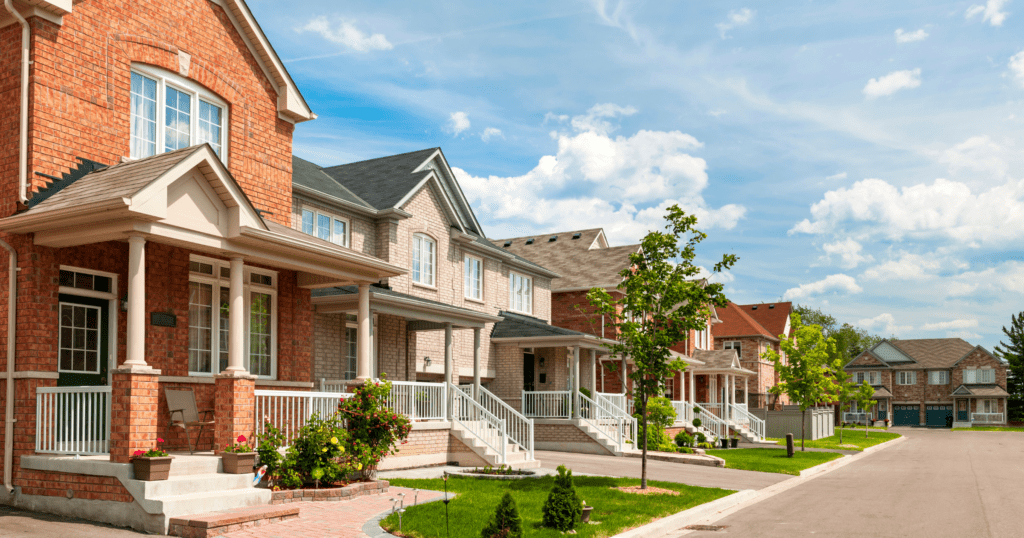
Many countries have put in place incentives for first-time buyers to help them achieve homeownership. This is also the case for first-time home buyers living in Canada.
The first time buyer program offers 5% or 10% of the purchase value as a down payment. This amount is added to your own down payment, which reduces the total cost of the mortgage and makes home ownership easier for those who are struggling to buy their first home.
How does the first-time homebuyer incentive work?
This is called a “shared equity mortgage,” which essentially means that the government shares the risks associated with the rise and fall of the property’s value. They provide 5% or 10% of the value of the property, and you pay back the same percentage of the value when you decide to sell it (whether the sale price is higher or lower than what you originally paid).
For example, if you purchased a $250,000 property, the government could provide you with up to $25,000 (10%). However, if you sold the property five years later for $350,000, you would have to pay them $35,000 (10%) of the total received.
As the name implies, this incentive is designed for first-time homebuyers. However, it’s not as simple as you might think. An eligible person is:
- A person who has never bought a property before
- OR, who has not occupied a property that she (or her current spouse) owned in the last 4 years
- OR, who has recently experienced a divorce or marital breakdown
Eligibility for the First-Time Homebuyer Incentive
Even if you fall into the above categories to be defined as a first time home buyer, there are other aspects that you will need to meet to qualify for the incentive:
- Your total income cannot exceed $120,000 per year.
- Your total loan amount cannot exceed four times your income eligibility level.
- It would be helpful if you (or your partner/spouse) were defined as a first-time home buyer.
- You must be a Canadian citizen, permanent resident or non-permanent resident authorized to work in Canada.
- You must meet the minimum down payment requirements.
- Your mortgage must represent more than 80% of the value of the property and therefore be eligible for CMHC or mortgage loan insurance. However, you will not pay mortgage insurance on the incentive you receive from the government, as it is considered part of your down payment.
The type of property you are looking for may play a role in the acceptance of the incentive. If you wish to take advantage of the full 10% incentive, the property must be new construction. Otherwise, the maximum incentive percentage is 5%.
It may seem obvious, but in order to claim this incentive and be accepted, the property you are purchasing must be located in Canada and used for full-time occupancy. It cannot be used to purchase an investment property.
Repayment of your incentive
As previously stated, at the time of sale of the property, the incentive must be paid in full. This measure also applies if you have owned the property for 25 years. However, there are also a few other unique circumstances that can trigger the refund:
- A change occurs in the intended use of the property. For example, you purchase a second property and the original incentive property becomes a “second home” or investment property.
- If you transfer your mortgage, it will trigger the repayment of the incentive.
- If you divorce or separate from the partner with whom you purchased the property and wish to purchase his or her share of the property, you will likely trigger the repayment of the incentive in full if you need additional mortgaged funds.
- Partial release of the property’s collateral will be treated as a sale, and will therefore trigger the repayment of the incentive.
Note: It is also worth discussing with your mortgage lender whether any of the refinancing options they offer may also trigger the incentive payoff.
How to apply for the incentive
First, you will need to go through the process of obtaining a mortgage for the home you wish to bid on. Second, verify that you are eligible for the incentive based on the above conditions.
There are two forms that you must complete once you have completed the first two steps. You can find them below:
Once these forms are completed, you will need to submit them to your mortgage lender, who will apply for you. Keep in mind that because of the extra time it takes, a seller may be less willing to deal with first-time buyers using this system if they are in a hurry to sell the property.
Once you have received the final signed copy, you can give it to your notary for his or her records.
You should then receive an acceptance notice, which means you must activate your incentive and provide the details to your attorney incentive provider. This must be done more than two weeks prior to the closing date of the property sale. You can activate your incentive by calling FNF Canada at 1-855-844-4535.
Example of a first-time homebuyer incentive
John wants to buy his first home for $300,000 and has raised the required down payment of 5% of the property’s value ($15,000).
Since John has a down payment of less than 20% and is considered a first-time buyer, he is also eligible for the first-time buyer incentive.
John is purchasing new construction and is therefore eligible for a 10% incentive. This means John can get an additional $30,000 through the incentive program.
This significantly reduces John’s mortgage to $255,000 (from $285,000 without the incentive). As a result, John’s monthly mortgage payments will be significantly reduced.
Ten years later, John decided to sell the property. It’s a good time to sell, and he sells it for $380,000.
Since John received a 10% incentive, he will have to repay 10% of the sale value of the property. As a result, John pays $38,000 on the sale of his property.






